- Home
- Walter Moers
Rumo: And His Miraculous Adventures Page 4
Rumo: And His Miraculous Adventures Read online
Page 4
‘Yes, dinosaurs. Or dragons. Or lindworms, if you like. Big, powerful lizards. Some of them – the herbivores – were merely big. Others were vicious, predatory carnivores. They had huge claws and teeth, were encased in scales and gristle, and could be up to a hundred feet long. The dinosaurs were enormous monsters.’
‘Oh,’ said Rumo.
Now I’ve captured his attention, thought Smyke. Monsters always do the trick …
‘So these monsters, these dinosaurs, went ashore all over the world. The one place where they remained in the water was Loch Loch, the big volcanic lake between the end of Demon Range and the Dullsgard Plateau. Unlike the oceans, which were cooling, Loch Loch retained its warmth because of the volcano that heated it from below. It also had large underwater caves in which the monsters could dwell in safety. The dinosaurs of Loch Loch thought: Why should we traipse around outside when it’s so nice and warm in here? So they remained in the lake while the other dinosaurs conquered terra firma. Then came the great catastrophe!’
‘Catastrophe?’ What a great big word, thought Rumo. It seemed to portend something bad.
‘Yes, some huge meteorites came crashing down from outer space. A gigantic dust cloud enshrouded the whole of Zamonia for millions of years and the dinosaurs died out – all except the ones in Loch Loch. They went on living in their underwater caves, mated with the surviving dinosaurs of other breeds and developed bigger brains. It was only then that they went ashore.’
Rumo opened his mouth to ask what ‘mate’ meant, but Smyke went on quickly, ‘So there they were, standing around on dry land and wondering what to do next. It was cold and draughty, and winter was on the way, but right beside Loch Loch stood a mountain riddled with caves and tunnels. It was warm and windproof inside, like a huge tiled stove, because it had been heated for thousands of years by the waters of the lake. So the dinosaurs crawled inside. That’s to say, the ones that could squeeze through the openings did so. The others, the really big ones, had to remain outside and were frozen to death.’
‘Frozen,’ Rumo repeated in a whisper, shivering.
‘The mountain was swarming with blind marmots. They were easy to catch and didn’t taste too bad, so the dinosaurs survived their first winter on dry land. To begin with they ate the marmots raw, but one day a shaft of lightning ignited some straw and they discovered fire. They learnt how to cook. From then on their menu included barbecued marmot kebabs and marmot soup, or marmots encased in clay and baked in glowing charcoal until they were done. All soft and juicy inside, and on the outside …’
Smyke broke off. A distant blare of seashell horns came drifting into the cave and the drums resumed their nerve-racking, thunderous din. Smyke cleared his throat.
‘The dinosaurs hollowed out the mountain some more and made it habitable. Because the winters were so cold and they were used to living in warm water they started to wear clothes. Marmot-skin cloaks at first, but then they stole some sheep from the neighbouring farms, invented spinning wheels and looms, and wove garments of wool. They also learnt how to smelt iron from the ore of which the mountain was composed. In short, they were clearly skilled at handicrafts and became steadily more intelligent and civilised. The local inhabitants had no idea they were dinosaurs, because dinosaurs had long been extinct, so they mistook them for dragons or lindworms, and believed them capable of breathing fire and devouring damsels. Anyway, they treated them with great respect and christened their mountain Lindworm Castle.’
Rumo carefully memorised the name.
‘The Lindworms, as the dinosaurs now called themselves, maintained distant but friendly relations with the people round about. Once they had rid them of their superstitious prejudices as regards the devouring of damsels, they carried on a modest trade in manufactured goods and foodstuffs but never allowed them inside their stronghold. They fortified the entrances and carved staircases, doors and windows, tunnels and caverns out of the rock. The whole mountain was transformed into a big, well-defended fortress. As the Lindworms’ mental powers steadily developed, so their savage, dinosaurian instincts withered away. Having hitherto communicated in a mixture of grunts and sign language, they learnt Zamonian from the farmers and traders with whom they came into contact. Later, they began to record their words and thoughts in writing. Language was one of their principal pleasures. They took to speaking in rhyme, wore long robes and elaborate jewellery. They … Well, they became artists, you understand? Artists and poets!’
Rumo stared at Smyke uncomprehendingly.
‘No, you don’t understand – no normal living creature could, but never mind. They liked to regard themselves as something special. Because they could write poetry, they thought their sweat smelt like perfume. They …’
The little Wolperting yawned.
‘In other words the Lindworms became soft – get it? They lost their natural instincts. They wore flashy clothes and weird, made-to-measure helmets designed to protect them from the fragments of rock that sometimes broke off. They paraded around in jewellery fashioned from their mountain’s deposits of iron ore and crystal. No wonder the local inhabitants started to gossip. Before long it was rumoured that the occupants of Lindworm Castle were a bunch of effeminate lizards knee-deep in gold and diamonds – easy meat for anyone courageous enough to storm their stronghold. One thing led to another, until one day a besieging army suddenly appeared at the foot of Lindworm Castle.’
Rumo sat up with a start. Some fighting at last!
‘It was a rabble of ill-organised Yetis – some two hundred of them, perhaps. They kicked up a din, hammered on the locked gates and yelled insults at the Lindworms – who tipped a few buckets of pitch over them and that was that. The pitch-smeared Yetis withdrew. They only attacked unfortified villages after that.’
Rumo subsided.
‘But then came the Darkmen.’
Rumo sat up again. More fighting!
‘The Darkmen were twice as numerous as the Yetis and better armed. They came equipped with scaling ladders and battering rams, and they were a fearsome-looking crew, having daubed themselves with pitch from head to foot – hence their name. There would have been little point in tipping more pitch over them, so the Lindworms used molten lead instead. That put paid to the second siege as well. The Darkmen didn’t go anywhere after that.’
Smyke grinned.
‘But that was when it really started! Rumours of the treasures in Lindworm Castle became ever more fanciful and exaggerated. If the Lindworms defended themselves so stoutly, it was said, they must have something to hide. There were stories of caverns filled with gold coins and precious stones; of mines in which rubies the size of a fist could be chipped from the walls with a hammer; of the so-called Lindworm Diamond, which was reputed to be as big as a house; of a secret tunnel to the centre of the earth, which the scientists of those days believed to consist of molten gold. And those were only the commonest theories about the Lindworms’ treasures. Every wayfarer, every adventurer, every fairground charlatan had a version of his own, and before long half the population of Zamonia was fantasising about them. Every mercenary eager to line his pockets put the capture of Lindworm Castle at the very top of his list. As you can imagine, it was besieged again and again by armies of Bluddums, Werewolves, Demonic Warriors and every kind of loathsome riff-raff to be found in Zamonia. But the Lindworms had only to boil up some tar or lead and tip it over them, and the besiegers got the worst of it. Indeed, plain boiling water did the trick in many cases.’
Smyke reeled off a whole series of attackers – Mad Prince Oggnagogg and his Cadaverous Cannibals, The Stone Giants, The Horrendous Horde, The Venomous Vampires, the Implacable Impalers, The Sinister Slayers, The Diabolical Death’s-Heads – all of whom had been deluged with tar or lead or water or all three. It was the same every time.
Rumo’s eyelids drooped.
‘And then,’ Smyke said abruptly in a low voice, ‘came The Copper Killers.’
Rumo didn’t know why, but there was some
thing about the way Smyke laid stress on those words that made him prick up his ears.
The Copper Killers …
The words seemed to have been slumbering deep inside him, and now they came to life. They sounded ominous. Rumo was suddenly wide awake.
Someone rattled the grille over the mouth of the cave and grunted malevolently. Smyke and Rumo gave a start and their fellow prisoners milled around in alarm. Then the Demonocles walked off, laughing, and silence fell.
‘That’s the Demonoclean sense of humour for you,’ said Smyke.
‘Go on!’ Rumo insisted.
‘Ah yes, the Copper Killers. Where besiegers were concerned, they really did represent an improvement in quality, because they were said to be a cross between living creatures and machines. That made them considerably tougher and harder to wound, let alone kill, than ordinary troops. The Copper Killers were products of the legendary Battle of Nurn Forest.’
‘Ah, a battle!’ Rumo whispered.
Smyke grinned and leant forward.
‘You mean you’d like to hear the story of the Battle of Nurn Forest before I go on with the siege of Lindworm Castle? Are you sure?’
Rumo nodded.
‘A wise decision, because one story can’t be understood without the other. But I must warn you!’ Smyke raised several of his arms in an admonitory fashion. ‘It’s a terrible, bloodthirsty tale – probably the craziest episode in the history of Zamonia! Do you really want to hear it?’
The faint flush that had appeared on Smyke’s face was a mark of excitement. He was into his stride. His troubles seemed temporarily forgotten and the words flowed from his lips in a steady stream.
‘Yes, yes!’ Rumo exclaimed. ‘Go on!’
The battle of Lindworm Castle
‘Very well, my boy. The Battle of Nurn Forest was one of the worst bloodbaths in the annals of Zamonia. It was fought between two armies made up of every conceivable type of creature found on the mainland: Demons, Bluddums, Bearwolves – the whole caboodle. The actual reason for the battle is lost in the mists of time. We only know that when it was over, neither side could regret having started it because all involved were dead.’
‘All dead?’ Rumo said disappointedly. Was the battle over already?
‘Well, not all of them were really and truly dead. Many of the warriors had been butchered, but a lot of them were still alive – maimed and cut to ribbons, but more or less alive.’
Smyke sighed hoarsely. He sounded like one of those warriors breathing his last on the battlefield.
‘Try to picture the scene: the gloomy depths of Nurn Forest wreathed in swaths of mist. Strewn across the blood-sodden grass were swords, pieces of armour, helmets, spears, breastplates, mailed gauntlets, greaves, clubs, battered shields, crossbows, balls and chains, knives, axes, halberds, splintered glass daggers, iron whips, knuckledusters – the participants in the Battle of Nurn Forest were the best-equipped warriors of their day, so it’s said. Then there were all the dead and maimed, the severed arms and legs and heads and ears and noses and fingers and lips and eyebrows and whatever else a blade can hack off. The branches of the surrounding trees were thick with ravens and crows lured to the scene by the moans of the dying, the scent of blood. Their avid croaking and cawing filled the air, interspersed with cries of pain, vile oaths and death rattles. The birds hopped impatiently from foot to foot, pecking one another as they competed for the best places. Soon, very soon, when the last of the warriors had expired, Nurn Forest would witness its next bloodbath: the banquet of the scavenging carrion eaters.’
Rumo didn’t stir. Smyke raised one hand as though listening.
‘But suddenly, growing louder and louder as it neared the battlefield from a westerly direction, came the sound of voices, the rustle of footsteps on dry leaves, the squeak of wagon wheels, the jingle of harness. Was it another army?’
Rumo pricked his ears as if trying to hear the distant commotion.
‘Yes, my boy, pay attention, because now comes the craziest part of the story. Approaching the forest from the west was no army, but a delegation of Grailsundian master surgeons on their way to an appendix conference.’
‘Surgeons?’
‘Yes indeed, medical experts trained to carry out operations of the most complex kind. Reattaching severed limbs, sewing up wounds, lancing veins, carrying out blood transfusions and amputations, trepanations and transplants.’
Rumo’s head was spinning with unfamiliar words.
‘But that isn’t the craziest part of the story – oh no, my boy, for approaching from the east was a party of itinerant watchmakers bound for the pocket-watch fair at Wimbleton. These people specialised in constructing and repairing clocks and other intricate mechanisms. They were craftsmen with the steadiest hands, keenest sight and strongest nerves in all Zamonia.’
Rumo didn’t altogether understand, but he nodded.
‘But not even that is the craziest part of the story! For approaching from the south were over a hundred armourers and locksmiths on their way to Florinth, where some power-hungry prince had commissioned them to build a monstrous war machine. They were craftsmen adept at screwing and welding iron components together, constructing flintlocks and fragmentation bombs, forging metal, sharpening blades and alloying gold, silver and copper – craftsmen of war, in other words.’
‘War,’ said Rumo, savouring the word.
‘Well, that would be enough crazy coincidences for an averagely crazy story, but the Battle of Nurn Forest involved the most improbable set of coincidences in the history of Zamonia. For entering the forest, this time from the north, came a delegation of alchemists.’
‘Al … alki …’
‘Alchemists! Alchemists belonged to a professional class … well, let’s call them scientists with artistic leanings or artists with scientific aspirations, take your pick. Very erudite men, in any case. They may have been physicians or quacks or charlatans, who are we to judge at this distance in time? In those days it was possible to master the rudiments of all the sciences. The alchemists believed so, at least, and they tried to amalgamate the sciences – to interweave them so as to develop cures for diseases, or formulas for the manufacture of precious metals, or elixirs of life. They sought to discover the philosophers’ stone, or perpetual motion, or the fountain of eternal youth, or ointments that would render you invulnerable or invisible. Or cheeses for use as ice skates.’
Rumo’s ears were buzzing now, but not only with the thunderous roar of the waves that broke against Roaming Rock. The unfamiliar words Smyke kept spouting had combined to form a tidal wave that went foaming through the convolutions of his little brain, washing away any clear-cut ideas it contained.
‘And so,’ Smyke went on implacably, ‘we now have alchemists, surgeons, mechanics and weaponsmiths – four very different professional groups that would not, under normal circumstances, have had anything to do with each other. After all, why should they have? And they met up in Nurn Forest of all places, on a battlefield littered with mortally wounded warriors, in a blood-soaked clearing strewn with limbs and weapons and bits of metal and battered armour.’
Rumo fidgeted impatiently. ‘Well?’ he said.
‘What followed was an unprecedented occurrence in the history of Zamonia. These very different experts decided to pool their skills, their tools, their knowledge and equipment, and render first aid. The smiths erected their smelting furnaces and bellows, the surgeons sterilised their instruments, the mechanics polished their magnifying glasses and set up their microscopes, the alchemists heated mysterious liquids in glass retorts and stirred herbal extracts in huge cauldrons. Now, where swords had clashed and death cries had rung out only a few hours before, molten metal bubbled, whetstones sang, furnaces roared, bellows wheezed and smiths’ hammers beat time. Severed limbs, discarded weapons and pieces of armour were gathered together in a big heap and carefully sorted. Separate piles were made of arms, legs, heads, helmets, knees, knee-guards and so forth. Wounds were sterili
sed, painkillers administered, bones splinted and one or two mercy killings performed. The experts exchanged requests and suggestions, limbs and organs, in a courteous and businesslike manner. They sometimes held brief but constructive discussions, and always decided on the simplest solution, the most logical course to adopt. Thin copper tubes were attached to arteries, muscles repaired with wires, sinews with leather thongs, nerve fibres with silk thread. An iron axe became a forearm, a watchmaker’s glass an eye, a hammer a foot. Why not replace a broken spine with the pendulum from a grandfather clock, an ear with an ear trumpet, a tongue with a bell clapper?’
Rumo instinctively fingered his tongue.
‘If an alchemist urgently needed some molten silver, a surgeon a microscopically small scalpel, or a locksmith a fully functional cardiac valve made of iron, the relevant experts promptly set to work to fulfil their requests. Knuckledusters were converted into teeth, watch movements into brains, sponges and gauze filters into livers and kidneys, bellows into lungs, electrified wires into nerves, vials of mercury into blood. Herbal extracts took the place of bodily fluids, visored helmets deputised for skulls and mailed gauntlets fitted with intricate clockwork became hands. A nose missing? Screw in a spigot instead! A finger off? Substitute a clasp-knife! A heart cut out? Insert a steam pump! No surgeon had ever replaced an artery with copper tubing, no alchemist had ever assisted a watchmaker, and no locksmith had ever worked with pincers and cotton swabs. Only an incredible set of coincidences had facilitated this explosion of creative energy, this unique interaction of science, art and handicrafts, experience, ingenuity and precision engineering, that ultimately gave birth to the army of the Copper Killers.’

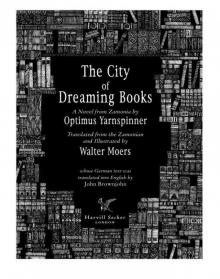 The City of Dreaming Books
The City of Dreaming Books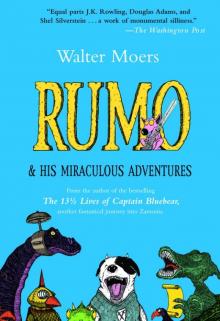 Rumo: And His Miraculous Adventures
Rumo: And His Miraculous Adventures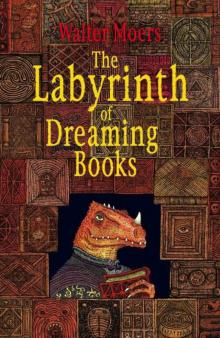 The Labyrinth of Dreaming Books
The Labyrinth of Dreaming Books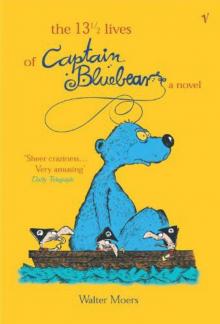 The 13.5 Lives of Captain Bluebear
The 13.5 Lives of Captain Bluebear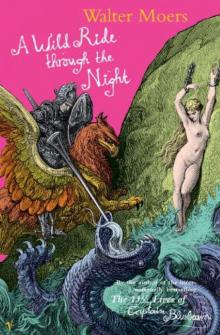 A Wild Ride Through the Night
A Wild Ride Through the Night